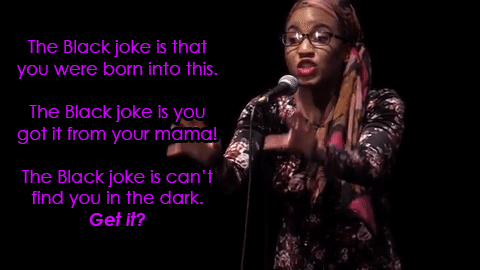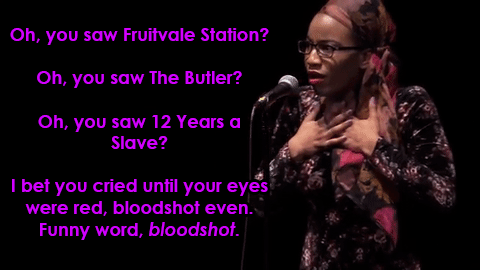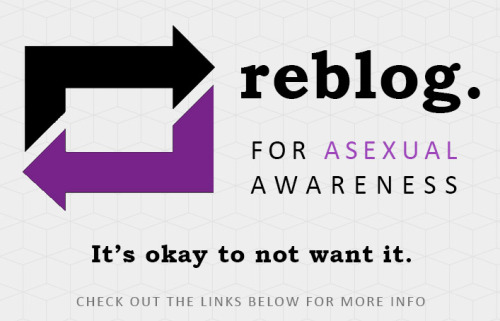Empathy For Others’ Pain Rooted In Cognition Rather Than Sensation

Empathy for others’ pain rooted in cognition rather than sensation
The ability to understand and empathize with others’ pain is grounded in cognitive neural processes rather than sensory ones, according to the results of a new study led by University of Colorado Boulder researchers.
The findings show that the act of perceiving others’ pain (i.e., empathy for others’ pain) does not appear to involve the same neural circuitry as experiencing pain in one’s own body, suggesting that they are different interactions within the brain.
“The research suggests that empathy is a deliberative process that requires taking another person’s perspective rather than being an instinctive, automatic process,” said Tor Wager, the senior author of the study, director of the Cognitive and Affective Neuroscience Laboratory and Professor of Psychology and Neuroscience at CU-Boulder.
A study detailing the results was published online today in the journal eLife.
Empathy is a key cornerstone of human social behavior, but the complex neural interactions underlying this behavior are not yet fully understood. Previous hypotheses have suggested that the same brain regions that allow humans to feel pain in their own bodies might activate when perceiving the pain of others.
To test this idea, the researchers compared patterns of brain activity in human volunteers as they experienced moderate pain directly (via heat, shock, or pressure) in one experimental session, and watched images of others’ hands or feet being injured in another experimental session. When volunteers watched images, they were asked to try to imagine that the injuries were happening to their own bodies.
The researchers found that the brain patterns when the volunteers observed pain did not overlap with the brain patterns when the volunteers experienced pain themselves. Instead, while observing pain, the volunteers showed brain patterns consistent with mentalizing, which involves imagining another person’s thoughts and intentions.
The results suggest that within the brain, the experience of observing someone else in pain is neurologically distinct from that of experiencing physical pain oneself.
“Most previous studies focused only on the points of similarity between these two distinct experiences in a few isolated brain regions while ignoring dissimilarities. Our new study used a more granular analysis method,” said Anjali Krishnan, the lead author of the study and a post-doctoral research associate in the Institute of Cognitive Science at CU-Boulder while the research was conducted. She is currently an assistant professor at Brooklyn College of the City University of New York.
This new analysis method identified an empathy-predictive brain pattern that can be applied to new individuals to obtain a brain-related ‘vicarious pain score,’ opening new possibilities for measuring the strength of activity in brain systems that contribute to empathy.
The results may open new avenues of inquiry into how the brain regions involved in empathy help humans to relate to others when they experience different types of pain. Future studies may also explore the factors that influence one’s ability to adopt another’s perspective and whether it might be possible to improve this ability.
More Posts from Er-zico and Others








Watch Powerful Spoken Word Poem “Black Joke” By Taylor Steele
In her poem “Black Joke” poet Taylor Steele highlights the most common jokes White people throw at Black people. She perfectly explains how unthoughtful it is of people to say such things and how an intention to come off as funny turns you into a racist. Next time you come up with a witty remark, think twice before letting unwholesome word proceed from your mouth.
Full poem
#BlackLivesMatter

A selection of reads centered around feminism, written by women of color for women of color.
“Feminism: A Movement to End Sexist Oppression” (from Feminist Theory: From Margin to Center)
Feminism Is For Everybody: Passionate Politics
Feminist Class Struggle
“Feminism and Class Politics”, a specific chapter from the book here.
The Oppositional Gaze: Black Female Spectators.
Understanding Patriarchy
Talking Back: Thinking Feminist, Thinking Black
Selling Hot Pussy: Representations of Black Female Sexuality in the Cultural Marketplace.
“Romance: Sweet Love” (from Women’s Voices, Feminist Visions, 4th Ed. By S. Shaw and J. Lee)
Woman, Native, Other: Writing Postcoloniality and Feminism - Trinh T. Minh-Ha
”Lynching, Empire, and Sexuality in Black Feminist Theory“ -Hazel V. Carby
”Transnational Feminist Pedagogy: An Interview with Inderpal Grewal and Caren Kaplan“
”Under Western Eyes: Feminist Scholarship and Colonial Discourses“ by Chandra Talpade Mohanty
”Feminist Problematizations of Rights Language“ by Jasbir Puar and Isabelle Barker
Feminist Genealogies, Colonial Legacies, Democratic Futures by M. Jacqui Alexander & Chandra Talpade Mohanty
”The Subject of Freedom“ by Saba Mahmood
The Spivak Reader
Borderlands/La Frontera by Gloria Anzaldúa
”Colonialism, Nationalism, and Colonialized Women: The Contest in India“ by Partha Chatterjee
”Can the Subaltern Speak?“ Gayatri Spivak
The Politics of the Veil - Joan W. Scott
”Decolonizing Feminism: Challenging Connections between Settler Colonialism and Heteropatriarchy“ by Maile Arvin, Eve Tuck, and Angie Morrill
”Native American Feminism, Sovereignty, and Social Change“ by Andrea Smith
Read on Trascender Magazine










This Burn Survivor And Makeup Artist Turns Tragedy Into Inspiration



Check out this robotic hand which can touch and feel, improving perception and reflexes for its user. [ Δ ]






Sources:
Menstruation Facts
68 Random Facts about Menstruation
History of the Tampon

Brexit makes a trip to the UK a great travel deal
The collapsing value of the pound in the wake of Britain’s vote to leave the European Union is frightening news for the country’s economy — but great news for Americans itching to plan a last minute summer vacation.




“Schrödinger’s Smoke. We describe a new approach for the purely Eulerian simulation of incompressible fluids. In it, the fluid state is represented by a ℂ²-valued wave function evolving under the Schrödinger equation subject to incompressibility constraints.” YouTube.







This Private 787 Dreamliner Jet Is Even More Luxurious Than You Can Imagine

Asexuality is an orientation in which a person does not experience sexual attraction to any sex and/or gender. They do not feel an intrinsic desire to make sex a part of their relationships with other people. However they may still be able to experience other types of attraction, and desire relationships with other people.
Check out the following websites to learn more about asexuality, join in on the community, and/or help increase asexual visibility and education.
Asexual Visibility and Education Network
International Asexuality Conference (Worldpride Toronto 2014 Affiliate Event) (June 28, 2014)
Asexual Things (asexual vis/ed tumblr blog)
Frequently Asked Questions
Asexuality Websites/Blogs/etc
-
 loro59bear liked this · 6 years ago
loro59bear liked this · 6 years ago -
 summerlapsedaway liked this · 6 years ago
summerlapsedaway liked this · 6 years ago -
 oneandthemany reblogged this · 8 years ago
oneandthemany reblogged this · 8 years ago -
 hiziram liked this · 8 years ago
hiziram liked this · 8 years ago -
 50shadesofmyblackass reblogged this · 8 years ago
50shadesofmyblackass reblogged this · 8 years ago -
 er-zico reblogged this · 8 years ago
er-zico reblogged this · 8 years ago -
 the-void-beckons reblogged this · 8 years ago
the-void-beckons reblogged this · 8 years ago -
 mencarihati liked this · 8 years ago
mencarihati liked this · 8 years ago -
 milkradio liked this · 8 years ago
milkradio liked this · 8 years ago -
 er-zico liked this · 8 years ago
er-zico liked this · 8 years ago -
 m-m-mad-madness reblogged this · 8 years ago
m-m-mad-madness reblogged this · 8 years ago -
 putlockerdotgov reblogged this · 8 years ago
putlockerdotgov reblogged this · 8 years ago -
 othernotebooksareavailable reblogged this · 8 years ago
othernotebooksareavailable reblogged this · 8 years ago -
 othernotebooksareavailable liked this · 8 years ago
othernotebooksareavailable liked this · 8 years ago -
 knownforms reblogged this · 8 years ago
knownforms reblogged this · 8 years ago -
 7eventy7even liked this · 8 years ago
7eventy7even liked this · 8 years ago -
 7eventy7even reblogged this · 8 years ago
7eventy7even reblogged this · 8 years ago -
 archiveofbiognosis reblogged this · 8 years ago
archiveofbiognosis reblogged this · 8 years ago -
 breakfastatikea liked this · 8 years ago
breakfastatikea liked this · 8 years ago -
 bluecherry4ever13 liked this · 8 years ago
bluecherry4ever13 liked this · 8 years ago -
 bluecherry4ever13 reblogged this · 8 years ago
bluecherry4ever13 reblogged this · 8 years ago -
 e16w reblogged this · 8 years ago
e16w reblogged this · 8 years ago -
 mangosyfresas liked this · 8 years ago
mangosyfresas liked this · 8 years ago -
 whatsitnot liked this · 8 years ago
whatsitnot liked this · 8 years ago -
 88amazingbrain88 reblogged this · 8 years ago
88amazingbrain88 reblogged this · 8 years ago -
 visual8 liked this · 8 years ago
visual8 liked this · 8 years ago -
 babyb13 liked this · 8 years ago
babyb13 liked this · 8 years ago -
 elainajordan reblogged this · 8 years ago
elainajordan reblogged this · 8 years ago -
 bittersvite liked this · 8 years ago
bittersvite liked this · 8 years ago -
 luxiferxstillbxrth liked this · 8 years ago
luxiferxstillbxrth liked this · 8 years ago -
 saintaries liked this · 8 years ago
saintaries liked this · 8 years ago -
 justgavemylastf-blog liked this · 8 years ago
justgavemylastf-blog liked this · 8 years ago -
 nouveauxx reblogged this · 8 years ago
nouveauxx reblogged this · 8 years ago -
 petitlitterateur reblogged this · 8 years ago
petitlitterateur reblogged this · 8 years ago -
 theflavorofmymadness reblogged this · 8 years ago
theflavorofmymadness reblogged this · 8 years ago -
 otter--pop reblogged this · 8 years ago
otter--pop reblogged this · 8 years ago -
 mewzia liked this · 8 years ago
mewzia liked this · 8 years ago -
 sparklingovarymagnum reblogged this · 8 years ago
sparklingovarymagnum reblogged this · 8 years ago -
 yorunofujinami liked this · 8 years ago
yorunofujinami liked this · 8 years ago -
 crystal-blossoms liked this · 8 years ago
crystal-blossoms liked this · 8 years ago -
 la-cruz-del-sur liked this · 8 years ago
la-cruz-del-sur liked this · 8 years ago -
 nogirlsallowed liked this · 8 years ago
nogirlsallowed liked this · 8 years ago
Dear Readers,Welcome to my personal blog. I'm Sabyasachi Naik (Zico,24).An Agnostic,deeply NON religious(atheist), and Secular Progressive Civil Engineer . I'm brown and proud to be an Indian tribe. “I want to say a word to the Brahmins: In the name of God, religion, sastras you have duped us. We were the ruling people. Stop this life of cheating us from this year. Give room for rationalism and humanism.” ― Periyar E.V. Ramasamy
198 posts